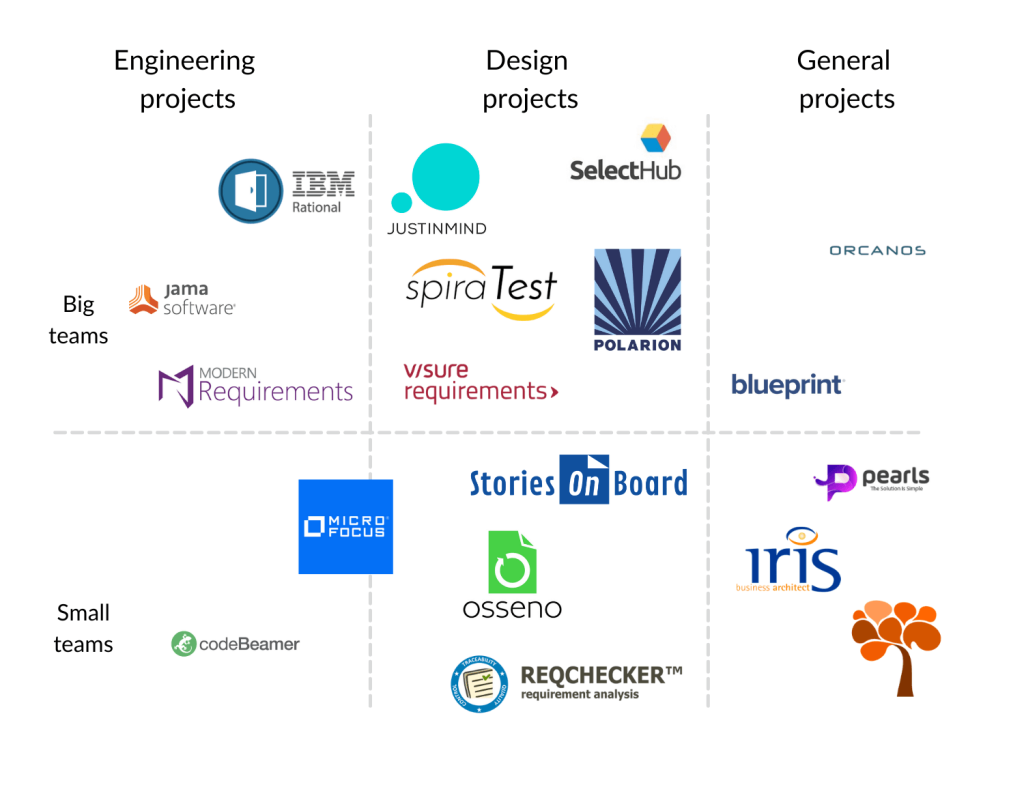
The landscape of requirements management tools in 2024 is diverse, offering solutions for various needs, budgets, and team sizes. Here’s an overview of some leading options:
Open-source Tools:
- Apache Jira: A popular project management tool with built-in requirements management capabilities. Offers basic features like requirements capture, traceability, and reporting.
- Visual Paradigm Community Edition: A comprehensive platform with features for requirements gathering, analysis, modeling, and traceability. Free edition limited to 2 users.
- OpenReq: A lightweight tool focusing on requirements capture and traceability, ideal for small teams and simple projects.
Commercial Tools:
- Jama Connect: A comprehensive solution with advanced features for requirements gathering, analysis, traceability, and collaboration. Offers strong integrations with other tools.
- Visure Requirements ALM Platform: A comprehensive platform for managing requirements throughout the entire lifecycle, offering powerful features for traceability, analysis, and reporting.
- IBM DOORS Next: A robust platform for managing large and complex requirements sets, offering advanced features for traceability, analysis, and compliance.
- Helix ALM: A comprehensive solution offering requirements management, defect tracking, and change management capabilities. Strong integrations with other Siemens products.
Cloud-based Tools:
- ClickUp: A project management platform with built-in requirements management features, offering flexibility and ease of use.
- Accompa: A cloud-based tool focusing on user-friendly requirements capture, collaboration, and reporting. Ideal for teams who value simplicity and affordability.
- SpiraTeam: A cloud-based platform offering requirements management, defect tracking, and test management capabilities. Strong integrations with other tools.
Choosing the Right Tool:
- Team size and complexity: Open-source tools might suffice for smaller teams, while complex projects might require more advanced features offered by commercial tools.
- Budget: Open-source solutions are free, while commercial tools typically have paid subscriptions with different tiers.
- Integration needs: Consider seamless integration with other tools you use, like project management or development tools.
- Security and compliance: Evaluate data security and compliance features, especially for sensitive projects.
Additional factors:
- Collaboration features: Look for tools that facilitate communication and collaboration between stakeholders.
- Reporting capabilities: Ensure the tool offers reports and dashboards to track progress and identify potential issues.
- User interface and ease of use: Choose a tool that is intuitive and easy to learn for your team.
By considering these factors and evaluating different options, you can choose the best requirements management tool to meet your specific needs and ensure successful project delivery.
Latest posts by Rahul Singh (see all)
- Mutual of Omaha: Selection and Interview process, Questions/Answers - April 15, 2024
- AES: Selection and Interview process, Questions/Answers - April 15, 2024
- Amphenol: Selection and Interview process, Questions/Answers - April 15, 2024

